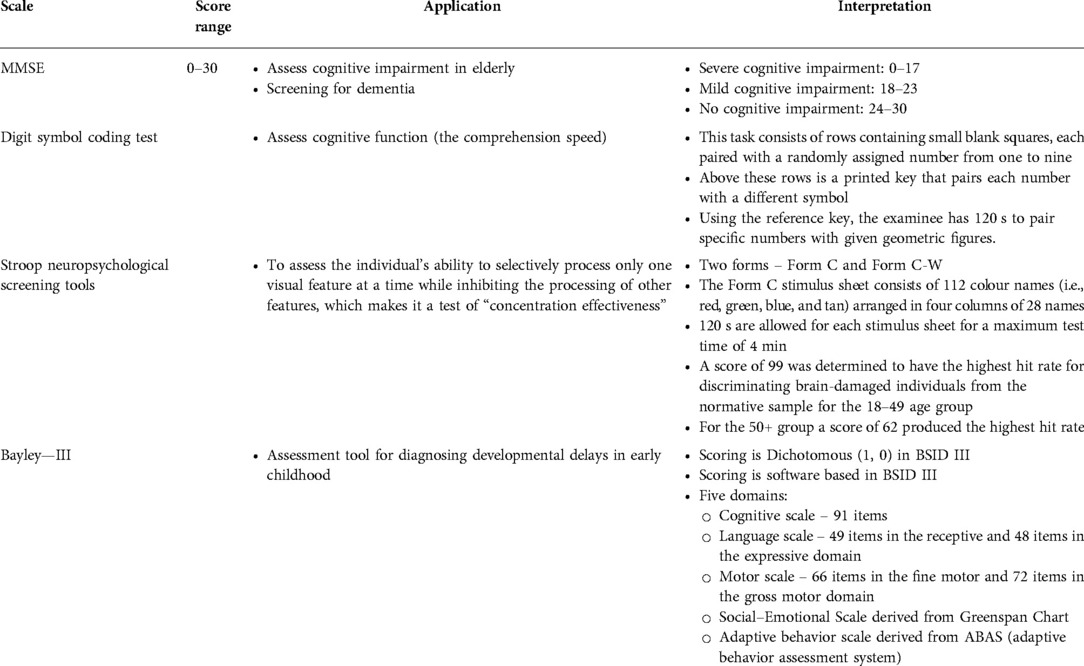- 1Department of Pharmacology, All India Institute of Medical Sciences Raipur, Raipur, Chhattisgarh, India
- 2Department of Pharmacology, Teerthanker Mahaveer Medical College and Research Centre, TMU, Moradabad, Uttar Pradesh, India
Dear Editor,
We have meticulously read the article “Association Between Methylmalonic Acid and Cognition: A Systematic Review and Meta-Analysis” by Wang et al., published in your esteemed journal (1). The objective of the study was fascinating as the authors tried to explore the correlation between the elevated levels of methylmalonic acid (MMA) and decline in cognition, which is an untouched area in research.
Upon reading the article, there is a slight ambiguity about certain aspects that requires clarification. It is appreciable that the authors addressed the paucity of studies on the aforementioned research question, by including cross-sectional as well as case-control studies apart from randomized controlled trials in this meta-analysis. However, the PICOS criteria for performing the research remains unsatisfactory for the readers, as the study encompassed a wide range of populations (general population and patients) and included extremes of age (infants and the elderly) as well. The scale used to assess cognition was also not uniform among the six cross-sectional studies included in the study. The authors combined the scales that yield continuous data (Mini-Mental Status Examination, Digit Symbol Coding [DSC] Test, Stroop neuropsychological screening tools) with a scale that yields dichotomous data (Bayley—III), which does not seem to be an appropriate step in the methodology (Table 1). Another concern is that the authors failed to demarcate the high and low values of MMA in the methodology section.
In the study by Kobe et al., two groups were created and compared on the basis of serum vitamin B12 levels and not MMA (2). During the data synthesis, the authors probably duplicated that same data. Similarly, in the study by Lildballe et al., the values of MMA have been expressed as median and range. However, the authors, in their meta-analysis, have expressed the values as mean and standard deviation without explaining the method of converting median and range to mean and standard deviation (3). In the study by Bailey et al., the results of the DSC test were presented as least-square mean and standard error, and the authors have not explained the method used to convert the data to mean and standard deviation (4). The authors included the cross-sectional studies to evaluate the influence of MMA as a single factor on cognition, and draw a more objective conclusion; however, with the help of the cross-sectional studies, it is difficult to establish a causal relationship as only a single measurement is performed (5). Among the meta-analysis of randomized studies, combining infants and the geriatric population with two different scales is not a prudent idea and will give erroneous estimates.
The results would have been much more relevant had the meta-analysis been performed considering a uniform population and comparable endpoints. Nevertheless, the authors have instigated the minds of keen researchers to further explore the current topic.
Author contributions
All authors contributed to the article and approved the submitted version.
Conflict of interest
The authors declare that the research was conducted in the absence of any commercial or financial relationships that could be construed as a potential conflict of interest.
Publisher's note
All claims expressed in this article are solely those of the authors and do not necessarily represent those of their affiliated organizations, or those of the publisher, the editors and the reviewers. Any product that may be evaluated in this article, or claim that may be made by its manufacturer, is not guaranteed or endorsed by the publisher.
References
1. Wang C, Zhang Y, Shu J, Gu C, Yu Y, Liu W. Association between methylmalonic acid and cognition: a systematic review and meta-analysis. Front Pediatr. (2022) 10:901956. doi: 10.3389/fped.2022.901956
2. Köbe T, Witte AV, Schnelle A, Grittner U, Tesky VA, Pantel J, et al. Vitamin B-12 concentration, memory performance, and hippocampal structure in patients with mild cognitive impairment. Am J Clin Nutr. (2016) 103(4):1045–54. doi: 10.3945/ajcn.115.116970
3. Lildballe DL, Fedosov S, Sherliker P, Hin H, Clarke R, Nexo E. Association of cognitive impairment with combinations of vitamin B12-related parameters. Clin Chem. (2011) 57(10):1436–43. doi: 10.1373/clinchem.2011.165944
4. Bailey RL, Carmel R, Green R, Pfeiffer CM, Cogswell ME, Osterloh JD, et al. Monitoring of vitamin B-12 nutritional status in the United States by using plasma methylmalonic acid and serum vitamin B-12. Am J Clin Nutr. (2011) 94(2):552–61. doi: 10.3945/ajcn.111.015222
Keywords: pediatric neurology, vitamin B deficiency 12, cognition, systematic reviews, methylmalonic acid
Citation: Balasundaram MK, Gupta D and Singh A (2022) Commentary: Association between methylmalonic acid and cognition—A systematic review and meta-analysis. Front. Pediatr. 10:1048969. doi: 10.3389/fped.2022.1048969
Received: 20 September 2022; Accepted: 18 October 2022;
Published: 25 November 2022.
Edited by:
Kette D. Valente, University of São Paulo, BrazilReviewed by:
Silvia Vincentiis, University of São Paulo, BrazilTor A. Strand, University of Bergen, Norway
© 2022 Balasundaram, Gupta and Singh. This is an open-access article distributed under the terms of the Creative Commons Attribution License (CC BY). The use, distribution or reproduction in other forums is permitted, provided the original author(s) and the copyright owner(s) are credited and that the original publication in this journal is cited, in accordance with accepted academic practice. No use, distribution or reproduction is permitted which does not comply with these terms.
*Correspondence: Alok Singh ZHJhbG9rc2luZ2hAYWlpbXNyYWlwdXIuZWR1Lmlu
Specialty Section: This article was submitted to Pediatric Neurology, a section of the journal Frontiers in Pediatrics
 Mahesh Kumar Balasundaram
Mahesh Kumar Balasundaram Dhyuti Gupta
Dhyuti Gupta Alok Singh
Alok Singh